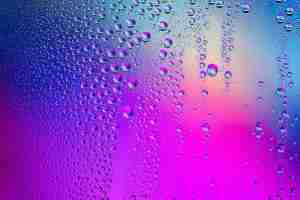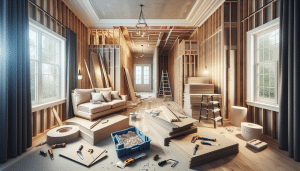When it comes to interior walls, drywall has long been the standard choice. It’s affordable, easy to install, and versatile. However, in today’s world of interior design, there’s a growing trend toward exploring alternatives to traditional drywall. Wall paneling, in particular, has gained popularity for its aesthetic appeal and unique characteristics. In this guide, brought to you by Utah Drywall and Repair, we’ll go beyond drywall and delve into the world of wall paneling and alternative wall covering options.
Walls are the canvas of your interior design, and the choices you make can greatly impact the look and feel of your space. While drywall remains a popular choice, there’s a growing interest in exploring alternatives to create unique and visually appealing interiors.
Contents
The Evolution of Wall Coverings
The world of wall coverings has evolved over the years, moving beyond the simplicity of plain drywall to a wide range of materials and textures that allow for creative expression.
Types of Wall Paneling
1. Wood Paneling
- Use: Wood paneling brings warmth and texture to interiors. It’s often used in rustic, traditional, and modern designs.
2. Wainscoting
- Use: Wainscoting is a type of wood paneling that covers the lower part of the wall. It adds a touch of elegance and is often used in dining rooms and hallways.
3. Shiplap
- Use: Shiplap is a style of wooden wall paneling known for its overlapping boards. It’s popular in farmhouse and coastal-inspired designs.
4. Stone Veneer Panels
- Use: Stone veneer panels mimic the look of natural stone and are used to create a rustic or luxurious ambiance in interiors.
5. Fabric Panels
- Use: Fabric panels offer a soft and textured alternative. They can be customized with various fabrics to match any design style.
Advantages of Wall Paneling
- Texture and Depth: Wall paneling adds depth and texture to walls, creating visual interest.
- Insulation: Some paneling materials provide insulation, improving energy efficiency.
- Durability: Many wall paneling options are durable and resistant to wear and tear.
- Aesthetic Versatility: Wall paneling allows for a wide range of design possibilities, from traditional to contemporary.
Alternatives to Traditional Wall Coverings
1. Wallpaper
- Use: Wallpaper offers endless patterns and designs, making it a versatile choice for adding color and personality to walls.
2. Decorative Tiles
- Use: Decorative tiles come in various materials and can be used to create unique accent walls or backsplashes.
3. Textured Paints
- Use: Textured paints add depth to walls and can mimic the look of materials like stucco or plaster.
4. Recycled Materials
- Use: Repurposed and recycled materials, such as reclaimed wood or metal, can be used to create one-of-a-kind wall coverings.
5. Green Wall Systems
- Use: Green wall systems incorporate living plants into the design, adding a touch of nature to interior spaces.
Choosing the Right Wall Covering
The choice of wall covering depends on factors like your design style, budget, and the intended use of the space. Consider consulting with a professional to select the right option for your project.
Installation and Maintenance
Proper installation and maintenance are essential for the longevity of your chosen wall covering. Follow manufacturer guidelines and seek professional help if needed.
Conclusion
While drywall remains a reliable and practical choice for interior walls, exploring alternative wall coverings and paneling options can elevate your interior design to new heights. Whether you opt for the warmth of wood paneling, the elegance of wainscoting, or the creativity of recycled materials, your walls can become a canvas for your unique style. For expert guidance and installation services, contact Utah Drywall and Repair at 801-406-6350 or visit our website drywallrepairutah.com. We’re here to help you transform your space.




